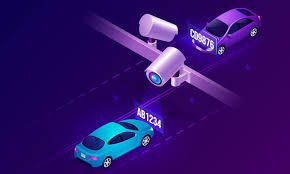
In today’s rapidly evolving security landscape, the need for advanced surveillance systems has never been more critical. One technology that stands out is the Automatic Number Plate Recognition (ANPR) system. Integrating ANPR into both public and private sectors in India is paramount for enhancing security, ensuring compliance, and optimizing operational efficiency.
ANPR systems utilize sophisticated optical character recognition (OCR) technology to read vehicle number plates in real-time, providing a seamless solution for monitoring and managing vehicular movement. In the public sector, ANPR can revolutionize traffic management and law enforcement. For instance, it significantly reduces the burden on traffic police by automating the identification of vehicles violating traffic rules or those involved in criminal activities. This system can instantly cross-reference number plates against a database of stolen or wanted vehicles, enabling swift action and reducing the reliance on manual checks.
Furthermore, ANPR and other AI systems can aid in managing congestion in urban areas. By monitoring vehicle flow and identifying bottlenecks, authorities can implement dynamic traffic control measures, such as adjusting signal timings or diverting traffic, to alleviate congestion. This not only enhances the efficiency of urban transport but also reduces pollution by minimizing idle times at traffic signals.
In the private sector, ANPR offers numerous benefits, particularly in the realm of access control and security management. For businesses with large parking facilities, ANPR can streamline vehicle entry and exit, ensuring only authorized vehicles gain access. This is particularly beneficial for enhancing security in corporate campuses, residential complexes, and commercial establishments. By integrating ANPR with existing security systems, businesses and large Housing Societies can maintain a comprehensive log of vehicle movements, aiding in investigative processes if needed.
Moreover, ANPR can play a crucial role in toll collection and parking management. Automated toll booths equipped with ANPR can facilitate cashless transactions, reducing wait times and enhancing user convenience. Similarly, in parking facilities, ANPR can automate the payment process, reducing the need for physical tickets and minimizing human intervention.
Despite its advantages, the implementation of ANPR systems in India faces challenges such as diverse number plate designs and varying lighting conditions. However, advancements in machine learning and AI are continuously improving the accuracy and reliability of ANPR systems, making them more adaptable to these challenges. Some existing ANPR systems have reached accuracy levels of 98% (even for 2 wheeler vehicles)
One can safely reiterate that ANPR is essential for bolstering security, enhancing operational efficiency, and ensuring regulatory compliance. The integration of ANPR systems in both public and private sectors is already having a huge imapct, and as technology evolves, the potential applications of ANPR will only expand, making it a vital component of India’s security infrastructure.
